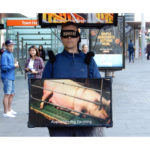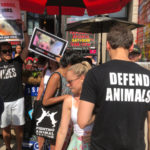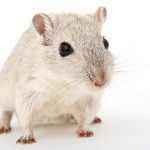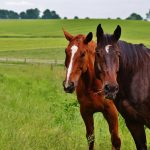The Law, Defences and Penalties for Animal Cruelty Offences in NSW
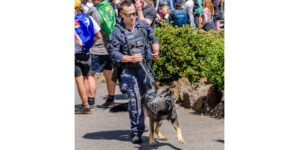
The NSW Police Force says it has charged a 46-year old man from West Kempsey in the mid-north coast with multiple charges including two counts of committing an act of animal cruelty following an alleged domestic violence.
According to police, officers attended a house on Neville Merson Street, West Kempsey at around 1am on Sunday 26 July 2020 and conducted a search with the assistance of a police dog.
They say the dog “gave an indication to her handler that there was someone underneath the house”, before going underneath the house and being punched by the suspect, “causing her to reel backwards”.
The suspect was placed under arrest and charged with two counts of animal cruelty, contravening an apprehended violence order , assaulting an officer in execution of duty, resisting an officer in execution of duty and breach of bail.
He was refused bail at the police station and is scheduled to appear in Kempsey Local Court on 27 July 2020.
The offence of animal cruelty in NSW
Section 5 of the Prevention of Cruelty to Animals Act 1979 (NSW) (‘the Act’) makes it an offence to commit ‘an act of cruelty’ upon an animal.
Section 4 of the Act defines an ‘animal’ as:
(a) a member of a vertebrate species including any:
(i) amphibian, or
(ii) bird, or
(iii) fish, or
(iv) mammal (other than a human being), or
(v) reptile, or
(b) a crustacean but only when at a building or place (such as a restaurant) where food is prepared or offered for consumption by retail sale in the building or place.
The same section defines ‘cruelty’ as including any beating, kicking, wounding of an animal, exposure to excessive heat or cold or inflicting pain on an animal. Cruelty also includes failing to take reasonable care of an animal, or to take reasonable steps to alleviate pain or suffering, or to provide necessary veterinary treatment.
It is also an offence to authorise another person to commit an act of cruelty on an animal that you own, or are in charge of.
The maximum penalty for animal cruelty is 6 months imprisonment and/or a fine of $5,500 for an individual, or a $27,500 fine for a corporation.
The offence of aggravated animal cruelty in NSW
Section 6 of the Act relates to ‘aggravated cruelty’, which is defined by section 4 as:
(a) causing the death, deformity or serious disablement of the animal, or
(b) the animal being so severely injured, so diseased or in such a physical condition that it is cruel to keep it alive.
The maximum penalty for aggravated animal cruelty is 2 years imprisonment and/or a fine of up to $22, 000 for individuals, or a fine of $110, 000 for corporations.
Defences to animal cruelty charges
A whole range of defences to animal cruelty are contained in section 24 of the Act, including religious slaughter; see section 24(c)(i) below.
The section says that a person is not guilty of animal cruelty where the act was committed against:
(a) (i) a stock animal–in the course of, and for the purpose of, ear-marking or ear-tagging the animal or branding, other than firing or hot iron branding of the face of, the animal,
(ii) a pig of less than 2 months of age or a stock animal of less than 6 months of age which belongs to a class of animals comprising cattle, sheep or goats–in the course of, and for the purpose of, castrating the animal,
(iii) a goat of less than 1 month of age or a stock animal of less than 12 months of age which belongs to the class of animal comprising cattle–in the course of, and for the purpose of, dehorning the animal,
(iv) a sheep of less than 6 months of age–in the course of, and for the purpose of, tailing the animal, or
(v) a sheep of less than 12 months of age–in the course of, and for the purpose of, performing the Mules operation upon the animal, in a manner that inflicted no unnecessary pain upon the animal,
(b) where the act of cruelty is done in the course of, and for the purpose of:
(i) hunting, shooting, snaring, trapping, catching or capturing the animal, or
(ii) destroying the animal, or preparing the animal for destruction, for the purpose of producing food for human consumption,
in a manner that inflicted no unnecessary pain upon the animal,
(c) in the course of, and for the purpose of, destroying the animal, or preparing the animal for destruction:
(i) in accordance with the precepts of the Jewish religion or of any other religion prescribed for the purposes of this subparagraph, or
(ii) in compliance with any duty imposed upon that person by or under this or any other Act,
(e) in the course of, and for the purpose of:
(i) carrying out animal research, or
(ii) supplying animals for use in connection with animal research,
in accordance with the provisions of the Animal Research Act 1985, or
(f) for the purpose of feeding a predatory animal lawfully kept by the person if:
(i) the act concerned was the release of live prey for the predatory animal, and
(ii) the diet of the predatory animal included animals of the kind released, and
(iii) the person believed on reasonable grounds that the feeding of live prey to the predatory animal was necessary for the predatory animal’s survival because the predatory animal would not eat a dead animal or meat from a dead animal.
The offence of serious animal cruelty in NSW
Section 530 of the Crimes Act 1900 (NSW) makes it an offence punishable by a maximum penalty of 5 years in prison to commit an act of ‘serious animal cruelty’, which is where a person, with the intention of inflicting severe pain–
(a) tortures, beats or commits any other serious act of cruelty on animal, and
(b) kills or seriously injures or causes prolonged suffering to the animal.
For the purposes of the offence,
- An “animal” is defined as a mammal (other than a human being), a bird or a reptile, and
- To “kill or seriously injure” an animal includes using the animal as a lure or kill, and
- A “serious act of cruelty” includes using the animal as a lure or kill.
The section imposes a 3 year maximum penalty where the act was committed recklessly rather than intentionally.
A person is not criminally responsible for the offence if the conduct occurred:
- In accordance with an authority conferred by or under the Animal Research Act 1985 or any other Act or law, or
In the course of or for the purposes of routine agricultural or animal husbandry activities, recognised religious practices, the extermination of pest animals or veterinary practice.


